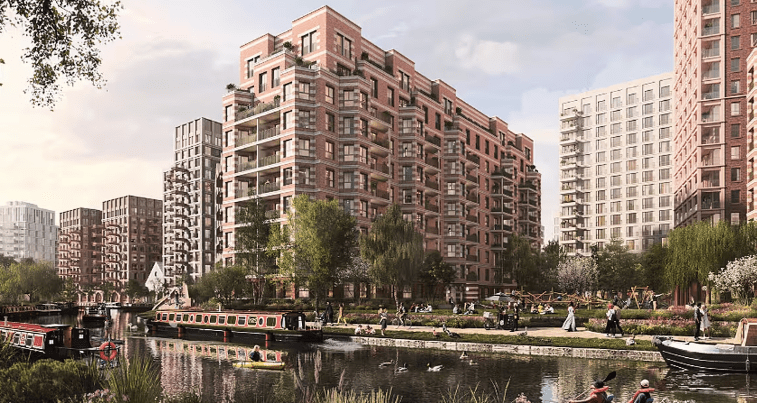Irish property developer Ballymore has confirmed that the iconic Notting Hill Carnival will remain uninterrupted during the course of its extensive regeneration plans in West London.
The Notting Hill Carnival redevelopment is part of a major transformation of a 19-acre brownfield site in Ladbroke Grove, jointly undertaken with UK retail giant Sainsbury’s.
This £2 billion initiative, known as Project Flourish, seeks to deliver over 2,500 homes alongside retail units and community amenities, forming a new canalside neighbourhood.
In a statement, the developer said: “Working closely with the local communities over the last three years, we have shaped our plans going forward to include the canal as a central feature of the development.”
Currently, sections of the site serve as key operational zones for the carnival, including the J’Ouvert morning celebration — a vibrant cultural event marked by music, dance, and artistic displays.
Ballymore has pledged to collaborate with organisers annually, ensuring that adequate infrastructure is maintained during the August bank holiday weekend when the festival takes place.
Designed with the Carnival in Mind
According to planning documents submitted to the Royal Borough of Kensington and Chelsea (RBKC), the development has been “designed with a conscious effort to retain the carnival both during the construction programme and in the future.”
Upon completion, organisers will benefit from upgraded infrastructure that accommodates staging areas and public festivities, allowing the carnival to flourish at the heart of the new neighbourhood.
The project site is located adjacent to Kensal Green Cemetery and St Mary’s Catholic Cemetery — two of London’s most historically significant graveyards and key cultural sites for the Irish community that has long resided in the area.
Despite these commitments, the project has attracted criticism from local residents and advocacy groups. Concerns have been raised over contamination at the former gasworks, along with the scale and density of the proposed buildings.
A planning decision from RBKC is still pending, even though it was initially expected in the previous year. Public consultation on the latest revisions remains open until 15 May 2025.
The Greater London Authority has also expressed reservations, citing a shortfall in affordable housing compared to targets set by the Mayor of London.
Additional concerns involve fire safety standards, transport logistics, and the design quality of single-aspect homes — especially regarding access to natural light.
Adjustments Following Feedback
Ballymore, responding to this scrutiny, announced that it has made “minor adjustments” to the application. These include enhanced pedestrian and cycle routes around Ladbroke Grove, along with improvements to public space accessibility.
A company representative reiterated Ballymore’s dedication to ensuring the development brings “maximum benefits for everyone within the Kensal Canalside Opportunity Area.”
Ballymore’s UK operations, overseen by founder Seán Mulryan, returned to profitability last year with £1.3 million in post-tax profits — a notable recovery from the previous year’s £5 million loss. Revenues nearly doubled to £28.7 million, driven by internal cost recharges.
While the firm is renowned for delivering ambitious urban regeneration projects on complex sites, the cultural and environmental sensitivity of this location ensures the redevelopment will continue to be closely monitored.
Ballymore – At a Glance
| Feature | Details |
|---|---|
| Founded By | Seán Mulryan (Ireland) |
| Headquarters | Dublin, Ireland |
| Known For | Urban regeneration, brownfield developments |
| Notable Projects | Embassy Gardens (Nine Elms), Brentford Project (West London) |
| UK Partners | Sainsbury’s, Local Authorities |
| Specialisation | Design-led redevelopment, complex infrastructure |






